Myelofibrosis Highlights from ASH 2022: What Patients & Caregivers Need to Know
Patient advocate Ruth Fein has been living with MPN for nearly 30 years. Despite the diagnosis, she lives a very active and full life.
In this conversation, she speaks with Dr. Serge Verstovsek, founder and director of the largest MPN clinical research center in the world, and Dr. Naveen Pemmaraju, director of MD Anderson’s rare disease program and executive director of the Cancer Network.
They discuss cutting-edge treatments and therapies, combination therapy as a focus in treating myelofibrosis, and the importance of being an educated patient and being your own advocate.

Thank you to Karyopharm Therapeutics for its support of our patient education program! The Patient Story retains full editorial control over all content.
This interview has been edited for clarity and length. This is not medical advice. Please consult with your healthcare provider for treatment decisions.
- Introduction
- The importance of being your own advocate
- Cutting-edge treatments and therapies
- Combination therapy to treat myelofibrosis
- What should patients consider when seeking treatment?
- Deciding which combination to try first
- Kinase inhibitors
- Treatment, health, and transplants
- Importance of being an educated patient
- Conclusion
- Myelofibrosis Patient Stories
Introduction
Ruth Fein, Myelofibrosis Patient: I’m an MPN patient with myelofibrosis. I’ve been living with one form or another of an MPN for nearly 30 years. When I was first diagnosed in the 90s, [it wasn’t] even called a blood disorder.
What I went through in diagnosis is very different than what’s happening today, where the initial diagnosis is that Big C, which of course is a fear I didn’t have to deal with. But now with myelofibrosis, it’s a game changer.
I’m very fortunate, as we all are, that research is moving so rapidly, changing our prognosis as the research advances. In fact, [I’ve been] on a clinical trial [for] almost three years now.
I remember it really clearly. I was in New York. It was supposed to be a routine appointment. Rain was pouring hard. I was soaking wet. I was carrying around my luggage. I sat down for my appointment with my super specialist and I’d had a bone marrow biopsy that surprised me. I had a new diagnosis. All of a sudden, I went from ET (essential thrombocythemia) to PV (polycythemia vera) to myelofibrosis, and that’s the progression people are worried about.
Immediately, I felt shocked. Then three hours later, I felt completely comfortable.
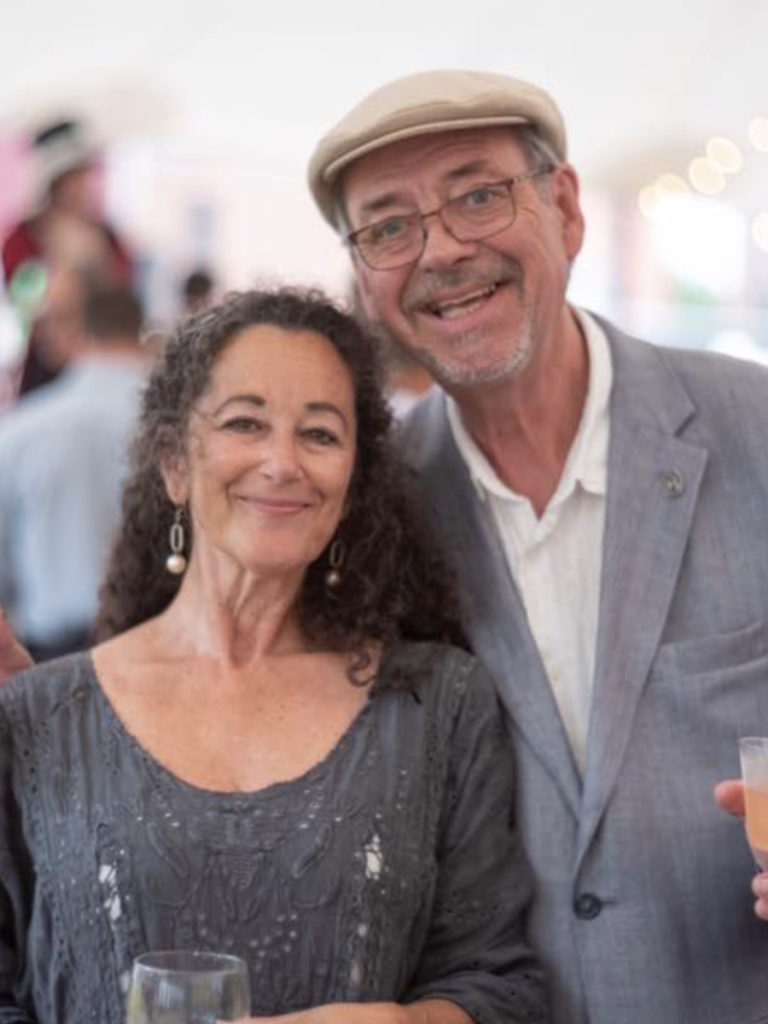
I’m seeing a super MPN specialist and she said, “I have the perfect clinical trial for you.” I got all the information [and] decided it made sense for me — that was three years ago and I am doing incredibly well.
I’m still gardening. I’m a health and science writer. I garden, I walk every day, I cycle, I swim. I’m the mother of two adult boys, a wife of a very active, wonderful man, and I happen to be a patient with myelofibrosis as opposed to my life being about myelofibrosis. My life is very full.
There’s so much we can do as patients to ensure that we’re getting the best care we can [get] to help us live longer and to live well as long as we’re here. And that’s why we have these conversations so we can bring you the expertise and the collective wisdom of the super specialists in the world.
Today, it’s all about MPN, specifically myelofibrosis. Two incredible docs are lending their insights so you can take your questions to your own doctors.
Dr. Serge Verstovsek with MD Anderson, founder and director of the largest MPN clinical research center in the world, and Dr. Naveen Pemmaraju, also with MD Anderson, who is the director of its rare disease program and executive director of the Cancer Network.
We’re having this discussion coming out of the biggest meeting of the top blood cancer and MPN specialists in the world. Our goal is to highlight what’s likely to be most impactful for those of us dealing with myelofibrosis, for both patients and caregivers.
We have some promising data on a therapy that could potentially not just address myelofibrosis symptoms but eliminate the disease for some of us. That’s very early, but it’s exciting as it was picked to be one of just a handful of highlighted sessions out of thousands at this conference that just wrapped up.
First, let’s set the stage. Most myelofibrosis patients and care partners go to a community care center. That’s, of course, where I started 20 years [ago] Even if a lot of what we’re going to talk about today is still potential or in clinical studies, what are the questions patients and caregivers should be asking?
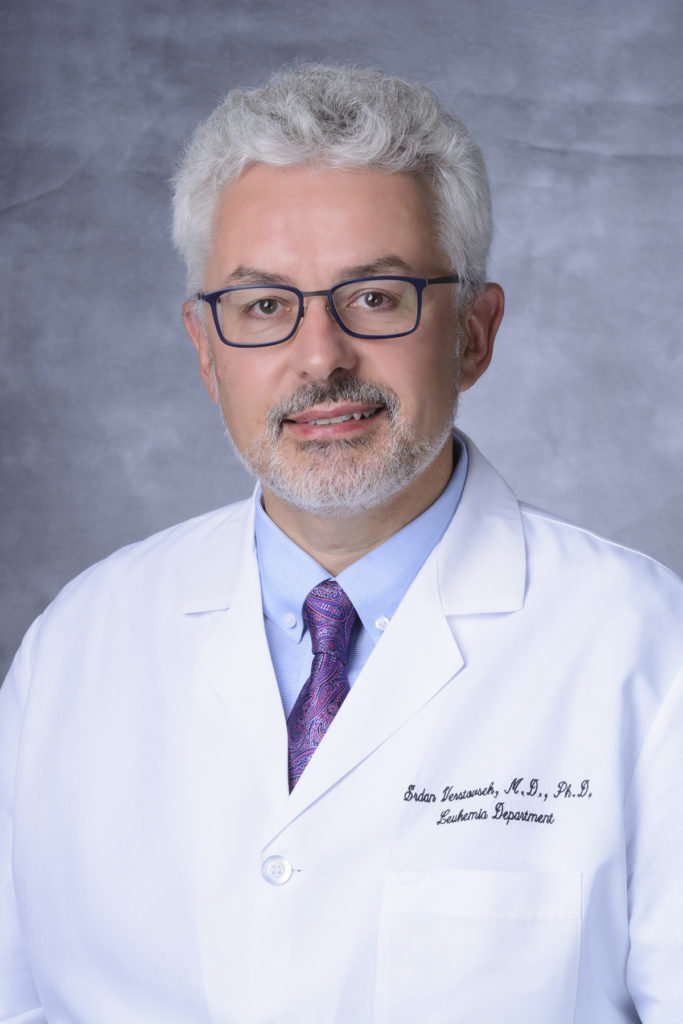
The importance of being your own advocate
Dr. Serge Verstovsek: Thank you very much for having me. It’s a pleasure to share my excitement with you.
First, a little proactive approach is always good to learn about the condition and the disease and see how the treating doctor is about providing the answers. It’s a team effort. Nobody knows everything. Be mindful of that.
Then, if necessary, go for a second opinion [with an] MPN specialist because ideally, there would be a team — a local doctor, the MPN specialist, and the patient — who decides what to do at what time. The patient is actually in charge. We are only suggesting.
Be an advocate for yourself because it’s a lifelong condition, which has [the] potential to shorten [your] life. Engage and don’t be mad or sad. There is a lot to do together with the local doctor [and] with the MPN specialist.
Ask questions. If there are no answers, seek the answer. Be one of the contributors altogether to improve your own condition.
Be an active participant. As I always say, who is the decision maker? It’s the patient. The educated patient, engaged patient is the best patient.
Cutting-edge treatments and therapies
Ruth: Great tips, Dr. Verstovsek. You’ve been leading the way in MPN research for decades, as many of us know, and it seems there have been so many developments in terms of cutting-edge treatments and new therapies for myelofibrosis. What should patients and their partners know about that?
Dr. Verstovsek: You’re right, there is a lot going on in the MPN field. I like to divide this [between] excitement about what’s coming soon and what’s coming maybe not soon enough.
Back in 2004, when I really engaged in MPN, there was no standard of care and there was no study or studies. We were trying to seek friendly people in different companies where we would perhaps use the drugs that are already on the market for something else, like thalidomide or lenalidomide.
People probably resonate well with these drugs. We try them and other colleagues in the field try them in myelofibrosis. They do help but not too much and not too often. Then the discovery of the abnormalities — JAK2 and others — led to [a] real interest in developing more specific drugs for myelofibrosis.
Where we are now, it’s like night and day. Now, there are three approved drugs for myelofibrosis. This fourth one, momelotinib, may be [approved] next summer. So four and numerous phase 3 studies. Numerous studies in general so that you have options. We just seek more patient participation.
Ruth: Thank you, Dr. Vertsovsek. Let’s dive into what many of us know more about — JAK inhibitors. We have 3 FDA-approved ones now:
- Ruxolitinib (Jakafi)
- Fedratinib (Inrebic)
- Pacritinib (Vonjo)
There was an update on pacritinib for myelofibrosis patients. Can you share more?
Dr. Verstovsek: [Pacritinib] is a JAK inhibitor that decreases the spleen [and] improves the quality of life.
It was approved in February 2022 for patients with low platelets, which is below 50, because it does not suppress the blood cell count like ruxolitinib or fedratinib, the other JAK inhibitors that have already been on the market for quite some time. The novelty is that it can improve anemia in some patients and that appears to be added value to it.
I actually tell my patients I treat with pacritinib — and these are the ones with the lower platelets — [and] that it’s not going to suppress your blood cell count. It may actually improve the anemia and it is good for the spleen and symptoms.
There is added value now that we know of, with [a] very [good] description of that value at ASH 2022. That’s on the recently approved drug.
Much enthusiasm is about a JAK inhibitor called momelotinib, which will be likely approved by summer 2023 because the application was submitted and it’s under review by the FDA.
This particular drug is different. It’s a pill like all the other JAK inhibitors. It may improve the symptoms and the spleen like all the other JAK inhibitors, but the real value is that anemia benefit. That is the primary reason why you would use momelotinib.
In a phase 3 randomized study that was done during COVID, it was proven to be very valuable for patients after initial ruxolitinib for control of the anemia, improving the anemia, improving the symptoms, and improving the spleen.
We expect that momelotinib, which is also very safe, will be one of the major new drugs particularly in the second-line setting once people fail ruxolitinib. All of these came from the ASH 2022 analysis. And it’s durable.
We will then have choices. We would have pacritinib for people with very low platelets or momelotinib for patients with anemia. We would optimize our care of patients for a longer period of time because we have been limited in what we could do once ruxolitinib fails.
Dr. Naveen Pemmaraju: I hope — and I know all my colleagues do, too — that we have dozens of these drugs to offer to different patients. Hopefully, one day we have a biological, molecular approach to selecting them as well.
Combination therapy to treat myelofibrosis
Ruth: Dr. Pemmaraju, let’s move to another big headline — combination therapy as a focus in treating myelofibrosis patients.
Dr. Pemmaraju: Combination therapy not only in the relapsed/refractory setting but we’re also investigating it now in the front-line setting. We have to keep in mind: how is the patient tolerating? Are there too many side effects? What is the actual benefit of adding the second agent compared to the JAK inhibitor alone?
Ruth: This always goes back to not all patients are alike. There isn’t a cookie-cutter approach. One thing I always say about MPNs and myelofibrosis is the only predictable thing is that they’re not predictable.
Dr. Pemmaraju: We always talk about personalized, individualized, targeted therapy. This is the era that we’re in now. Each patient may have a different comorbidity profile — other diseases and diagnoses that they carry outside of the myelofibrosis.
[They have] different ways they metabolize drugs [and] different molecular mutations in their myelofibrosis. We’re in a whole new era of trying to select either clinical trial drugs or, hopefully, one day, even standard-of-care drugs.
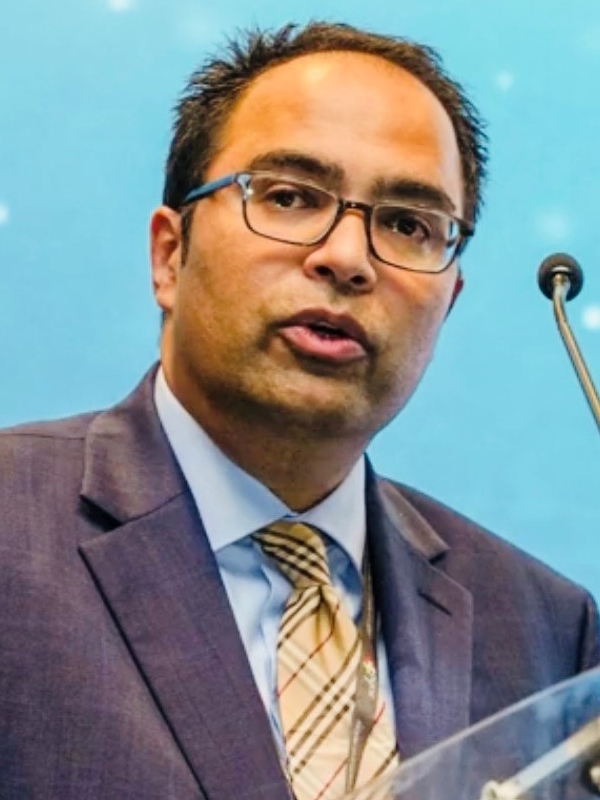
Ruth: Thank you, Dr. Pemmaraju. Let’s talk about some of these combinations. One update has been on a BCL inhibitor, navitoclax, in combination with a JAK inhibitor. Where would that come in?
Dr. Pemmaraju: This is excellent. We all work on these clinical trials together. I think the navitoclax agent, BC-LXL, is important. It’s not yet FDA-approved for anything.
What it’s showing is that in myelofibrosis in particular, either as a single agent or in combination with [a] JAK inhibitor, it has possible disease-modifying effects.
We showed very good overall survival in suboptimal patients who are already on a JAK inhibitor and added the navitoclax. Some variant allele fraction reduction, some bone marrow fibrosis improvement.
The navitoclax agent is now in phase 3 randomized global study: ruxolitinib plus navitoclax versus ruxolitinib alone essentially. We hope to have those results in [2023] so that we know if the combination approach is beneficial to our patients in the front-line, untreated setting.
Ruth: I want to talk about another phase 3 trial, a drug close to my heart: pelabresib. That’s the trial that I’ve been on for three years and that’s used again with a JAK inhibitor. I understand the results have been very promising. In fact, my doctor calls me a poster child for this clinical study.
Dr. Pemmaraju: Yeah, exactly right. In this class of combinations, we mentioned the BC-LXL strategy and navitoclax. You also have this bromodomain or BET inhibition with pelabresib.
Very encouraging results there as well, which again started out in the single-agent, relapsed/refractory setting and then was added on to the ruxolitinib and now is being investigated in patients. Again, [the] same thing: phase 3 randomized study, front-line.
For you and I that have been in the field for longer than a decade, what this marks is for the first time, we’re moving combinations into the front-line setting. That means a patient who’s newly diagnosed with myelofibrosis is then put forward with two drugs instead of one. That’s the big deal here and we’re starting to hear those results.
What should patients consider when seeking treatment?
Ruth: This is really exciting because we’re talking about options here. But if you were to say anything more as a specialist, a super specialist in myelofibrosis and other MPNs, you are seeing a patient and you’re making decisions on which way to go with therapy. What other considerations are there since you have so many options now, thankfully?
Dr. Verstovsek: There is no real reason to switch right away. If one thing doesn’t work, maybe you can optimize it. What does this mean? This means that you can combine things together.
There are a number of medications that are not JAK inhibitors that are improving the red blood cell count, the spleen, or symptoms in myelofibrosis patients [and] that can be combined. [They are] being tested in advanced clinical studies to help the patients right from day one. Day one [means] the patient needs the therapy [and is] newly diagnosed.
Why don’t we use two drugs together instead of one? There are medications like pelabresib, parsaclisib, navitoclax, or luspatercept. Basically, giving four is to enhance what the JAK inhibitors do. More of the spleen [and] symptoms control and perhaps much more durable.
Luspatercept is for anemia control while you are treating with a JAK inhibitor or ruxolitinib. One aspect of drug development [is] starting with the best combination from day one. If you start with ruxolitinib alone, you add in suboptimal responders, [which are] people who benefit but not optimally.
You add another agent later. That’s like parsaclisib, another daily pill that was proven in a presentation in ASH to be very valuable in people who are already on JAK inhibitors [and] doing okay, but there is room for improvement. You add parsaclisib on top of it, another pill, and you enhance the spleen or symptom control.
We [don’t] necessarily need to go from one drug to another drug to another drug, which is the common path, and it’s always there to do. Maybe we need to talk about combinations in specific clinical situations. We are developing multiple different combinations for different clinical scenarios.
One will be better than the other or applicable more in one patient than the other. If that doesn’t work, you go to another drug and then maybe another combination. Maybe within the next three to five years, we’ll have a number of choices not just as a single agent but the combinations.
Deciding which combination to try first
Ruth: How do you decide which combination first? I know there was data also presented [about] ruxolitinib with different agents, including novel agents such as selinexor, [which was] first approved in multiple myeloma. Now it’s being used in myelofibrosis treatment research. Can you shed some light on this?
Dr. Verstovsek: We have been studying several combinations already. I mentioned those medications, but there are newcomers, which may be better. Difficult to say from the beginning, but selinexor is another drug that is approved for multiple myeloma that may be active in myelofibrosis. It seems so from the preliminary results.
Interestingly, there was also a presentation by Dr. Kiladjian from France on adding interferon to ruxolitinib, which also enhanced the ability of ruxolitinib to do the job on the spleen and symptoms. There were some intriguing results on molecular improvements as well.
Perhaps it’s not only about combinations with a completely new, unproven yet, or completely investigational drug. Sometimes you may just look back in time and say, “Is there something there that I can use that is already established as [an] agent or a drug interferon?”
We are having a larger umbrella here without limitations in our attempts to optimize the care for our patients. It’s pretty exciting. You can have selinexor as an example. We think that’s approved for something else so much different than myeloma. You try it in a completely out-of-common-sense approach, like myelofibrosis, and it does work. We’ll follow that particular clinical study of that combination very carefully as well.
Dr. Pemmaraju: There’s this new era of novel drugs. They either come straight out of the lab or they’re borrowed from some of the other blood cancers. Selinexor is a novel one. It’s actually already US FDA-approved, for example, in multiple myeloma, but sometimes, the doses are higher or lower [or] mechanisms of action combinations.
Again, that combination, that new drug is following the same pattern we’ve seen, which is single-agent activity for relapsed/refractory and then now moving into the front line in combination with ruxolitinib, a JAK inhibitor.
Kinase inhibitors
Ruth: One other area of inhibition, if you will. You mentioned these different kinds of inhibitors. Along the way, you mentioned kinase inhibition. That’s something that could be coming over the horizon.
Dr. Pemmaraju: Yes, exactly. The third category outside of these two is what’s called PI3 kinase inhibition. Kinase, the word itself when it’s used, really means messenger or pathway in some of these cancer cells.
We didn’t have these clinical trials five [or] seven years ago. What we’re starting to do now is pick out individual pathways in the cancer myelofibrosis cell outside of JAK-STAT.
[We’re] trying to pick pathways that may complement JAK-STAT so that you can get a dual or combined approach. That’s what a lot of these phase 2 and phase 3 trials are doing and even more novel agents than these first three that we’re talking about.
Treatment, health, and transplants
Ruth: One important point here is the thought [that] transplants can be very intimidating for a lot of people. Do you feel that some of these newer therapies or combinations will help alleviate the need to go there?
Dr. Verstovsek: I think, at the moment, it’s the other way around. We are trying to improve the condition of the patients and make them physically better, metabolism to improve, inflammation to be controlled well, and get the patients to transplant in the best possible shape.
At the moment, transplant is still the only procedure that can eliminate disease and cure patients. There are limitations on the medications. We are trying hard to extend the benefit of pills, but they have limitations. Nothing really works forever.
I hope that there are actually more patients going through the transplant as we improve their condition and then the transplant success is even higher when you get the “healthier” patients.
Unless we develop the drugs, something that would potentially eliminate disease antibody in calreticulin-mutated patients. This is in the future; it’s not even in the studies yet [of anything that] has that potential. At the moment, we encourage people to go through the transplant when they are in the best possible shape on a JAK inhibitor.
Dr. Pemmaraju: Allogeneic stem cell transplant remains the only curative modality for our patients with myelofibrosis. It’s tough to say that because it’s such a difficult procedure for many of our patients. Many of our patients are older [or have] comorbidities.
Across the world, as I meet with patients and doctors, they don’t have access [to] or follow-up for it. That’s tough. That’s the hope and optimism that I personally have: can we offer these combinations or other novel agents to try to cure the disease outside of stem cell treatment?
Unfortunately, I would say stem cell transplant is the only curative option, but again, unfortunately, it’s not available to the vast majority of our patients.
Ruth: Speaking of cure, that is the big splash that just came out of this ASH meeting. Dr. Verstovsek, what was all that buzz about?
Dr. Verstovsek: It has to do with the development of a possible new therapy. The key word is “possible” because the presentation was on preclinical testing. [It’s a] possible new therapy for a third of the patients with myelofibrosis or ET (essential thrombocythemia) that have a specific mutation: calreticulin mutation.
Everybody probably knows about the JAK2 mutation, but there are a couple of other mutations that are important that are mutually exclusive. You have JAK2 mutation, calreticulin mutation, [and] MPL mutation. These are mutually exclusive and present in about 90% of the patients with myelofibrosis and 90% of patients with ET (essential thrombocytopenia).
What they do is activate inside the bone marrow cell this pathway that we call a cascade of protein. My patients call it a highway. It jacks that highway. It’s always active because of these driver mutations. That makes your cells grow and causes inflammation.
Because this mutated protein is on the surface of the cells, we can identify malignant cells. This is a marker of [a] malignant cell. Now, the presentation was on [the] development of [an] antibody. Another construct would be attaching specifically to the cell with the mutated calreticulin and basically [letting] it die off over time, so elimination of the disease.
This is a potential of such a therapy, [an] antibody for mutated calreticulin, which will be given to patients with myelofibrosis or ET that have calreticulin mutation by genetic testing. It’s easy to do and that’s the potential of inhibiting the growth of malignant cells specifically. Elimination of the malignant ones is what everybody is talking about.
We hope that in the near future, perhaps [in] 2023, we’ll have a study of it with the antibody for patients with calreticulin mutation. Extremely exciting because we usually talk about improvement in the bone marrow function — anemia needs to improve, decrease in symptoms, or smaller spleen. This has a potential [for] what we call molecular response — decreasing the number or eliminating potentially the malignant cells.
Ruth: That is exciting! To be clear, this calreticulin-targeting therapy is not in [a] clinical trial yet, so the hope would be for it to enter a phase 1, first in humans, study hopefully this year.
Speaking of clinical trials, I’m a part of one now. You’re trying to get more people to know about and ultimately participate in clinical trials, too?
Dr. Verstovsek: Participation in the study would be the ultimate goal in my view from the patient’s perspective. You get the standard, but you get something extra on top to make it even better. Why not?
From your own perspective and from the perspective of benefit to the community of MPN patients, why not seek participation in a clinical study if it’s not mentioned already by the treating doctor?
Importance of being an educated patient
Ruth: That’s exciting because it helps people understand the importance of where all cancer therapies are hopefully heading into with understanding more data about the person. In this case, the mutation.
What is your message to patients and their care partners [or] caregivers about the importance of making sure they understand or [are] asking questions of their doctors about mutations?
Dr. Verstovsek: The best patient is [an] educated patient. In our own practice, we try to provide the patients [with] everything we know about their condition unless the patient says, “No, no, no, you are the doctor. Don’t tell me anything,” which is not very common.
We have a very enthusiastic group of patients that would like to know everything and be part of decision-making and planning, which is the optimal care in my view. We embrace everybody and we want everybody to participate and understand.
The disease is there for some reason. We cannot really say, “This is why it happened,” but we can describe it very well by molecular testing, the testing of chromosomes, the testing for fibrosis grade in the bone marrow, and as you measure the spleen and the red blood cells.
You want to know everything you can. Sometimes, that information is useful for therapeutic decision-making; sometimes, it’s not. Patient education and understanding of what it is, what can we do about it, and how is very important.
Calreticulin mutation in the future — some reservations here — can potentially really make a difference for these patients. We’ll see.
Conclusion
Ruth: It seems that two things are going on. One is medical science is moving forward. Personalized medicine is the name of the game and patients need to have an active dialogue with their doctor as to where they are now with their myelofibrosis and what applies, either in a trial or with an approved or newly approved medicine, right?
Dr. Pemmaraju: You could not have said that better. I really want to emphasize what you said because we are now beyond the point where we only had one treatment option or one standard-of-care option. That’s awesome.
Dr. Verstovsek: I always try to emphasize to our colleagues in the field and the patients themselves who are savvy and go online that there is so much going on. Get engaged. Standard care came to become [the] standard of care from research. It didn’t just appear.
The combination [and] new drugs that are in development, potentially better than the standard of care, are subject to research. That’s how you do it. We are here to team up with the companies, with the regulators, and with the patients all together for [the] betterment of therapy for myelofibrosis. Be alert. A lot is going on. Be a participant.
Ruth: Thank you both, Dr. Verstovsek and Dr. Pemmaraju, for joining us in this conversation to help us, myelofibrosis patients and care partners.
Dr. Pemmaraju: Thank you so much and thanks for having me.
Dr. Verstovsek: My pleasure. I hope it was useful to everybody. I’m here to help.
Ruth: Thank you to the patients and loved ones who are so engaged in understanding more. There is a lot to be hopeful for.

Special thanks again to Karyopharm Therapeutics for its support of our independent patient education content. The Patient Story retains full editorial control.
Myelofibrosis Patient Stories
How to Support Someone with Cancer: Karina & Jesse's Myelofibrosis Story
“I underwent a lot of sadness, hardship, and difficulty, and all that entails. But I pressed forward in hope for sure. There was a lot of hope that just kept me going all those years.”
Demetria J., Essential Thrombocythemia (ET) progressing to Myelofibrosis
Symptoms: Extreme fatigue, stomach pain (later identified as due to an enlarged spleen), dizziness, shortness of breath
Treatments: Spleen-shrinking medication, regular blood transfusions, bone marrow transplant
Neal H., Prefibrotic Myelofibrosis
Symptoms: Night sweats, severe itching, abdominal pain, bone pain
Treatment: Tumor necrosis factor blocker, chemotherapy, targeted therapy, testosterone replacement therapy
Andrea S., essential thrombocythemia (ET) progressing to Myelofibrosis
Symptoms: Fatigue, anemia
Treatments: Targeted therapy (JAK inhibitor), blood transfusions, allogeneic stem cell transplant
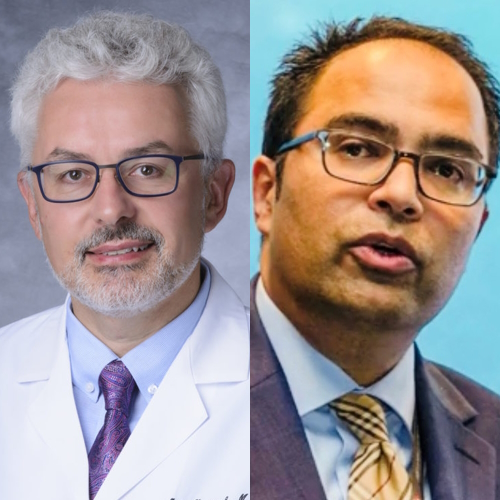


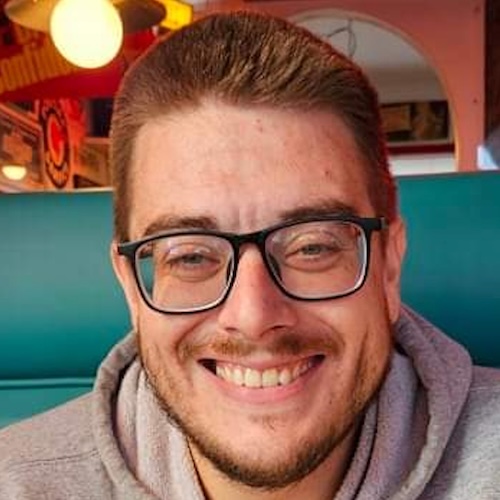
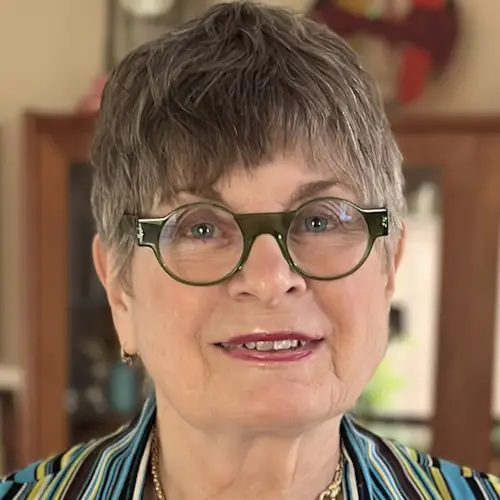
One reply on “Myelofibrosis Highlights from ASH 2022”
How come you guys don’t need a (SCT)? My ET 01 morphed into MF in 05 and I was on HU up until a year ago all my counts plummeted. Now I need blood transfusions and I take Jakafi. I have CALR + and 3+ fibrosis. I am 58, no Cytogenic Abnormalities, had two Neuroendocrine Carcinoid Malignant Tumors and a couple of other setbacks, and if I don’t have a (SCT) they say I would have 14 months left, but because I’m 58 and no chromosome Abnormalities I should have a SCT. I go to Mt. Sinai and I have one of the top doctors of MPN’s. I’m just curious why you guys haven’t had a SCT? I know it’s a personal decision, I feel like I’m 158, so I’m going hopefully I’ll get cured. God willing. I was just curious, thank you guys for all that you do, I appreciate everything!